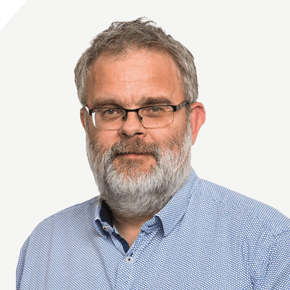The Movement and Place framework, also known in New Zealand as the One Network Framework (ONF), classifies all roads and streets in a network at a strategic level. For more information on this framework refer to this NZTA resource or my previous blog.
The general urban movement and place (M&P) classfication includes all roads and streets in a network, as well as what we call stroads, also known as mixed-use arterials in the New Zealand context, where there is a clash between moderate to high vehicle movement (road) function and moderate to high place or context (street) function. Many studies have shown that these routes, especially those with high M&P function, are where the highest crash risk occurs for both vehicle-only crashes and crashes involving active road users (pedestrians and bikes).
In this post I discuss what an ideal road/street network would look like in terms of M&P, and that would achieve a safe transport system. In this example, I am restricting my assessment to vehicle dominate movement corridors, rather than high-people movement corridors, such high pedestrian, cycle and bus corridors, which are also covered by the M&P framework. In this case a safer transport system would be one that is largely free of high trauma (eg. deaths and serious injuries) roads and streets. Figure 1 shows a future M&P framework that could be the aspirational goal of new and modified transport networks for traditional vehicle- dominate movement corridors.

Figure 1 - Existing and Future Movement and Places Framework
A key aspect of the future M&P framework is the avoidance or removal of the high crash risk city hubs and main streets vehicle movement corridors (top right) and the transformation of activity streets. This revised framework acknowledges that at the high-end of both movement and place it is very difficult to achieve a vehicle-dominated streescape that achieves both safe system outcomes, eg. low risk of trauma crashes, and efficient movement of vehicles and goods, especially freight. But at the activity street level there is more ability to balance the demands of movement and place, using principles like those used in the complete street approach to streetscape design.
An alternative future M&P framework could also largely exclude activity streets. Several planned cities like Canberra in Australia, College Station (Texas) in the USA and Milton Keynes in United Kingdom generally have such a transport network. While these cities in theory should have very low levels of trauma, especially involving pedestrians and bikes, they are also often considered car-dominated (and can have vehicle crash problems at major intersections) and often lack some of the vibrance of cities with activity streets. Often stroads, especially in city centres, have grown organically and achieve a balance of movements and place, but this can come at the expense of road safety.
The proposal here is to avoid the more excessive stroads of the M&P hierarchy and transform those which have a moderate level of place and movement to achieve safer outcomes for all road users. What this looks like for each route can be quite route specific and should be guided by principles like those in the Complete Streets approach.
Transformation of Street Networks
The approach taken to avoiding high-risk stroads in new versus existing transport networks will be quite different.
In new networks care needs to be taken with regard to the road hierarchy and the location of land-use such as strip shopping and other major generators of active road users, such as schools and universities. The higher volume vehicle movement corridors need to be limited access, with suitable facilties for crossing pedestrains and other active road users. Any activities that do occur along such routes, such as fast food restaurants ideally need to be via service roads not direct access.
It is often more challenging to change current high movement and place stroads. Where options permit, like stroads through rural towns, then limited access bypasses may be an option. This option may also be available in larger urban areas, where alternative corridors exist or can be built and traffic can be diverted. In other cases land-use may have to change, so that any placemaking occurs elsewhere in the network or on one side of the road. Often land-use changes over time as footfall on such roads reduce.
In this article I have limited my discussion on M&P to vehicle movement corridors and avoidance of stroads. This does not full reflect the multi-modal nature of the M&P framework. In cases where people-movement (pedestrians, cyclists and public transport/transit) is prioritised over vehicle movement, it is possible to have city hubs and main streets in cities that operate safely. More on this in a future post.
Queen St in central Auckland is a perfect example of how stroads can be addressed.
It started off as an activity street, which then grew and expanded into a 4-lane main street as the cities population grew. After suffering with significant congestion, air pollution, poor urban amenity and pedestrian crashes, it has been transformed into an acitivity street, with its vehicle movement role reduced and its place function enhanced.

Queen St 1985 and 2025 (40 years later)
In my next post I will be discussing the connection between the movement and place classfication and the more detailed complete streets approach.

.png?width=556&height=152&name=Abley_MasterLogo-Website%20(1).png)

